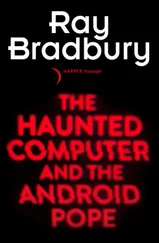Bill was a famous programmer (in programming circles) before I ever owned an Apple—in fact, before I had even seen an Apple computer. I first learned of his name when on my journey west to visit my brother Gary—the trip that turned into a career—I stopped in Chicago to visit my aunt, who had an Apple II. Several diskettes containing demonstration programs came with the machine. One of the diskettes contained a game called Penny Arcade, which had a beautiful graphic opening sequence that struck me as a particularly provocative example of what one could do with an Apple. Penny Arcade had been written by Bill Budge.
The first time I met Bill was at the West Coast Computer Faire in 1981. Since then we’ve spent a lot of time together, talking about the art and science and business of developing software, and on several occasions we have even talked about becoming business partners. I can remember one particular occasion when a conversation between Bill, me, and some other programmers actually led to Bill’s program generator and masterwork— The Pinball Construction Set, about which more will be said later on.
Like most great programmers, Bill got into software at a young age. He was in exactly the right place at the right time to join the first generation of programmer-entrepreneurs. But unlike today’s youngest programmers, who have learned to program with the more advanced computer languages that have come along in the past few years, Bill started out the hard way. At sixteen, as a precocious student at Piedmont High, Bill was introduced to computers by his math teacher, who put a few exceptional students together with an old IBM 1401. The 1401 didn’t have an easy-to-learn high-level language like BASIC, or even an older, harder-to-learn language like FORTRAN. Bill had to create his first programs in a language called 1401 Autocoder, a very primitive assembly language.
An assembly language consists of three-letter commands (like JMP or LDA) that tell the computer to perform very simple one-step-at-a-time operations. For example, where a command in a high-level language like BASIC might be able to say PRINT X + Y − Z, an assembly language program might require a dozen instructions to perform the same task. Assembly language instructions, however, can be converted into machine language—the code of zeroes and ones that instruct the computer to produce the on-and-off electronic impulses that constitute a computer program in operation— by means of a special translation program or assembler.
Assembly language is a very tedious and complex language to create programs with, since the computer must be instructed in exhaustive and unambiguous detail about where to find the data to operate on, how to operate upon them, and what to do with them once they are processed. And if any single symbol is out of place, the whole program will fail. Because the assembly language instructions correspond so closely to the electronic activities of the computer hardware, assembly language is called a low-level language, or one that, as some say, is “close to the machine.”
Most programmers prefer to write their programs in a high-level language because it is more like English and is easier to use than the complex assembly language. When one learns enough BASIC to write programs on a computer, the BASIC interpreter built into the BASIC language program works as the program runs to convert each line of the program’s instructions into machine language commands. However, BASIC programs are never as compact or as fastrunning as code written by a programmer directly in assembly language.
The speed of execution of a program is particularly important in computer games, because people don’t want to wait for three minutes to see if their shot hit or missed the alien invader. Graphics and animated figures are possible only when a program runs quickly. For these reasons, then, an assembly language expert like Bill Budge had an edge over other programmers when computer games came along.
But long before that time, when Bill was still learning assembly language programming in high school, he had the first “religious experience” of his programming career. His math teacher gave him a program for multiplying two numbers by repeatedly adding one of the numbers to itself and then stopping when the number of repetitions equaled the second number. This kind of instruction that starts the computer performing the same set of subinstructions over and over until a certain goal is accomplished is a basic programming technique known as “looping.”
“I got real excited,” Bill told me when he recalled that first insight, “because the whole idea of programming became clear to me when I saw what a loop could do. It was an incredibly exciting moment. I wrote down the lines of the program, then checked them to make sure they were right. All of a sudden, I saw what a loop really was for, why there could be such a thing as a loop, and how you could do a lot of things with the right kind of repeated sequences of simple instructions. By the end of high school I thought I was the world’s greatest programmer.”
But although he had far surpassed his teacher’s ability to show him anything new, he was still a novice, and there was no hacker subculture of other high school-age software prodigies, such as there is today, to initiate him into the deeper mysteries of programming. He was virtually on his own, and when he was graduated from high school, he realized that spending so much time with his programs had locked him away from his peers. He went to the University of California at Santa Cruz as an English major, determined to expand his horizons beyond his obsession with programming virtuosity.
“I was fooling myself into believing that I didn't want to program computers as much as I did,” he remembers. “I didn’t want to be a nerd. I wanted a social life. I wanted to date. So I started acting cool. I wanted to be a writer. But I didn’t want to write. Then it became clear that although writing was a struggle for me, programming was still a pleasure. So I transferred to the computer science program in Berkeley and concentrated on learning as much about computers and programming as I could.”
The year that Bill went to Berkeley was 1975—a signal year in the history of microcomputers, since that was when the introduction of the MITS Altair brought programming out of the world of expensive mainframe computers and within the reach of hobbyists. Of course, Bill didn’t have to build a microcomputer from a kit to program. He could program on the finest equipment available at Berkeley. He wasn’t interested in kid stuff like microcomputers, and video games were still in their infancy then.
Instead, Bill wanted to create systems software and write compilers. It was the deep stuff of computerdom, and by now Bill was more interested in his career goals in the mainframe world than he was in the kind of intense emotional involvement that had gripped him at sixteen, when he first discovered the loop. Then, in 1977, as a graduate student in computer science at Berkeley, he had his second “religious experience” when his friend and fellow graduate student Andy Hertzfeld showed him one of the earliest Apple computer. Bill still gets a wide-eyed look when he talks about it: “What I saw was the graphical bandwidth that was possible with the Apple. Like the loop, it opened a door onto a huge universe of possibilities.”
“Bandwidth” is simply jargon for a measure of the amount of information than can be transferred between the computer and the display screen, and between the display screen and the eye of the person looking at it. Think of bandwidth as the width of a pipeline of information. Morse code can transmit only one bit of information at a time, so it has a narrow bandwidth. A television image can convey millions of bits of information in less than a second, so it has a very high bandwidth.
Читать дальше










